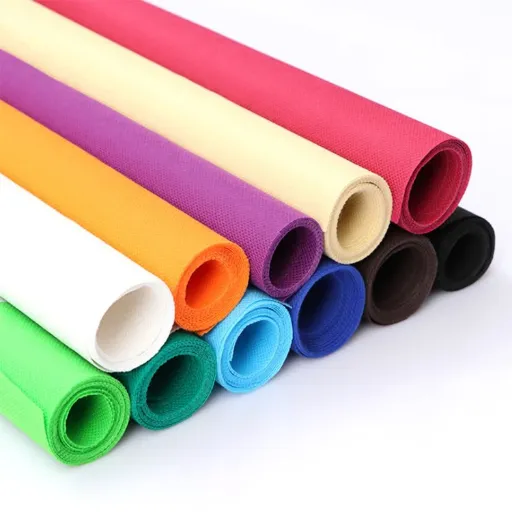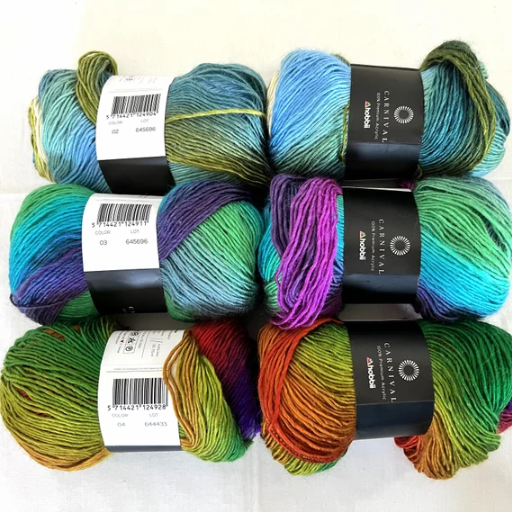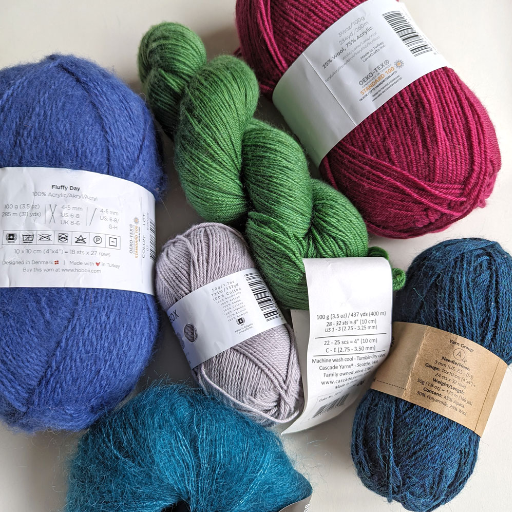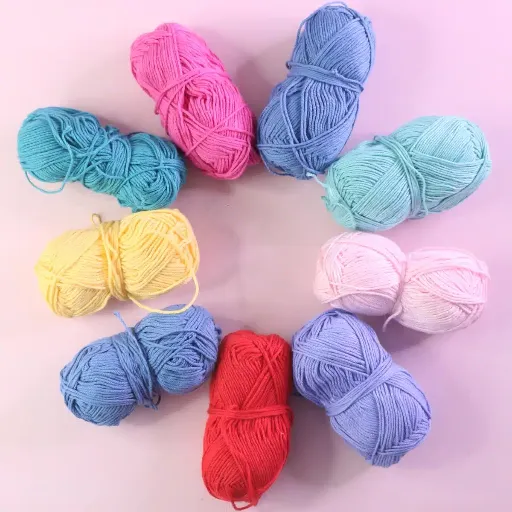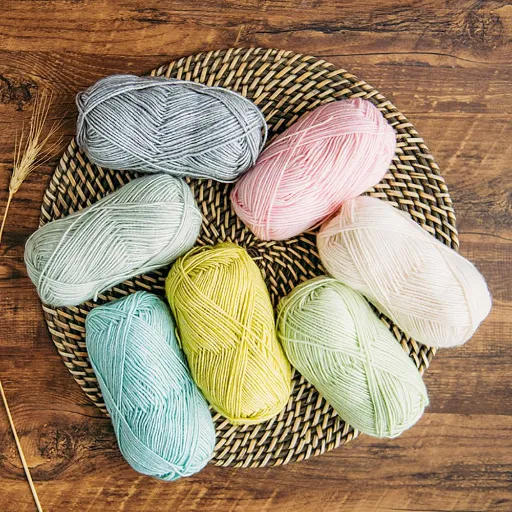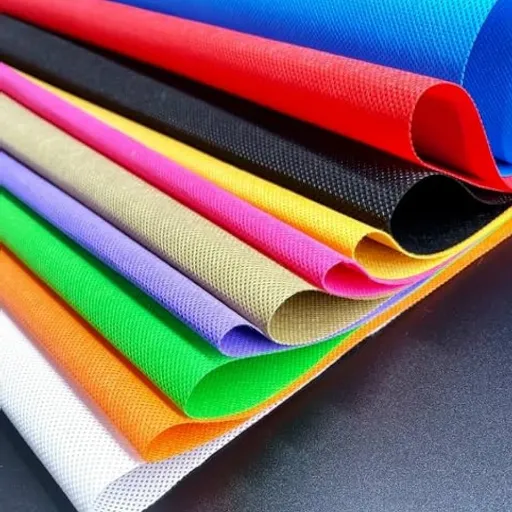Picking the right kind of yarn for that special crafting project is the art of grasping acrylic and cotton yarns and how they differ. This comprehensive guide will help you make the perfect choice for your next project!
Introduction to Acrylic Yarn and Cotton Yarn Types

Acrylic and cotton yarns are two of the extremely popular kinds of fibers for knitting and crocheting, optimized with respect to their separate properties for different projects. Acrylic is a synthetic fiber whose properties include being highly durable, cheap, and partly resistant to sunlight with considerable options in its wide color selection. Cotton yarn, on the other hand, is a natural fiber from the cotton plant that’s comfortable, soft, and chemical-free, making it perfect for summer clothes or interior items.
What is Acrylic Yarn?
Being a synthetic fiber, acrylic yarn is a polymer synthesized by the process of polymerization from petroleum or natural gas. It is suitable due to its weight, durability, and elegance for a whole range of knitting and crochet works.
✅ Acrylic Yarn Advantages:
- Machine washable and easy care
- Resistant to moths, mildew, and shrinking
- Fast drying
- Versatile – can mimic natural fibers
- Cost-effective
- Wide color selection
❌ Acrylic Yarn Disadvantages:
- Less breathable than natural fibers
- Not environmentally friendly
- Energy-intensive production process
- Lower-grade types may feel scratchy
What is Cotton Yarn?
Cotton yarn is composed mainly of cellulose, a natural polymer, which renders strength and breathability, with soft and durable fiber from cotton seeds. It is widely used in the textile industry on account of its wicking characteristic, making it suitable for garments, towels, and items that are in direct contact with the skin.
✅ Cotton Yarn Advantages:
- Highly breathable and moisture-wicking
- Soft and comfortable against skin
- Biodegradable and sustainable
- Excellent stitch definition
- Hypoallergenic
- Great for warm weather items
❌ Cotton Yarn Disadvantages:
- Can shrink if not cared for properly
- Less elastic than synthetic fibers
- Generally more expensive
- Heavier than acrylic
- May require gentler care
Detailed Comparison: Acrylic vs Cotton Yarn
| Parameter | Acrylic Yarn | Cotton Yarn |
|---|---|---|
| Material Type | Synthetic fiber | Natural fiber |
| Texture | Smooth, slightly plasticky feel | Soft and breathable |
| Durability | Resistant to wear and tear | Moderately durable, depends on quality |
| Water Absorption | Low moisture absorption | High moisture absorption |
| Stretchability | Moderate elasticity | Low elasticity |
| Weight | Lightweight | Heavier compared to acrylic |
| Warmth | Retains heat well | Offers cooling properties |
| Dye Affinity | Vibrant and long-lasting colors | Natural tones, good dye retention |
| Environmental Impact | Non-biodegradable, less eco-friendly | Biodegradable, more eco-friendly |
| Cost | Typically less expensive | Usually more expensive |
| Maintenance | Machine washable, low care required | Machine washable, softer care needed |
| Best Usage | Ideal for warm garments and crafts | Best for summer and lightweight items |
Environmental Considerations
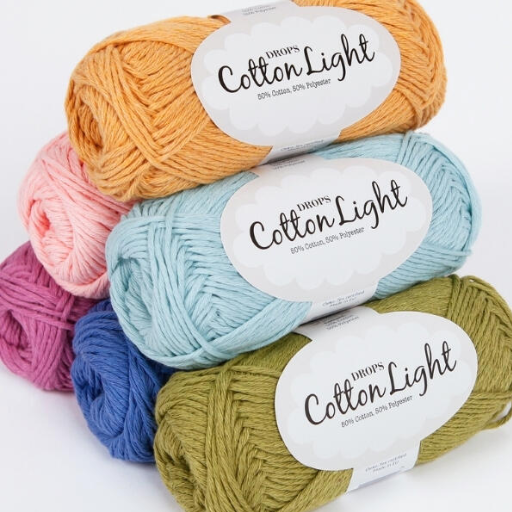
🌱 Sustainability Spotlight
Cotton (especially organic) wins in terms of biodegradability and environmental friendliness, while acrylic offers durability and low maintenance but poses environmental challenges due to its synthetic nature.
Acrylic Environmental Impact
- Made from non-renewable petroleum resources
- Energy-intensive production process
- Releases VOCs (volatile organic compounds) during manufacturing
- Non-biodegradable – persists in environment for years
- Sheds microplastics when washed
- Contributes to greenhouse gas emissions
Cotton Environmental Impact
- Natural and biodegradable fiber
- Conventional cotton requires extensive water use (2,700 liters per T-shirt)
- Traditional farming uses pesticides and synthetic fertilizers
- Organic cotton uses less water and no synthetic chemicals
- Better long-term environmental benefits
- Supports sustainable farming practices
Best Projects for Acrylic and Cotton Yarn
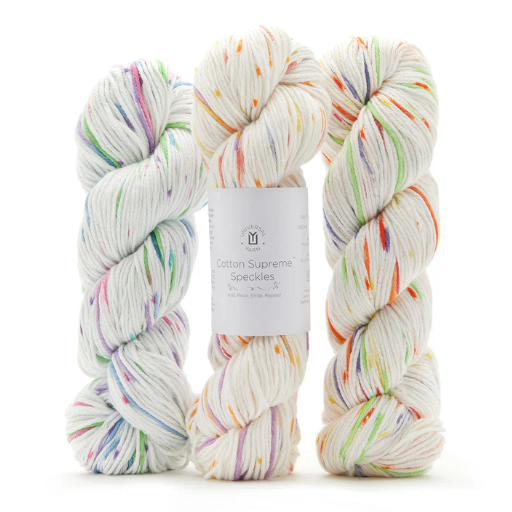
🧶 Perfect Projects for Acrylic Yarn
- Blankets and throws – Durable and machine washable
- Scarves and hats – Warm and weather-resistant
- Children’s toys – Safe, non-allergenic, and easy to clean
- Everyday sweaters – Affordable and low-maintenance
- Outdoor items – Resistant to moisture and mildew
🌿 Perfect Projects for Cotton Yarn
- Dishcloths and washcloths – Highly absorbent
- Summer tops and dresses – Breathable and cooling
- Baby items – Soft and gentle on sensitive skin
- Tote bags and market bags – Strong and durable
- Home décor items – Natural texture and appearance
- Kitchen towels – Excellent moisture absorption
Care and Maintenance Tips
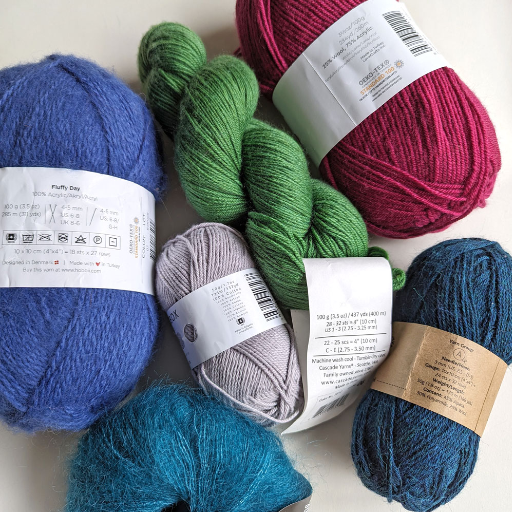
Caring for Acrylic Yarn Items
- Machine washable in warm water
- Use low heat for drying
- Resistant to most stains and odors
- Can be treated with fabric softener
- Minimal special care required
Caring for Cotton Yarn Items
- Machine wash in cold to warm water
- Avoid high heat to prevent shrinking
- Air dry flat when possible
- May require gentle detergents
- Iron on medium heat if needed
Making the Right Choice
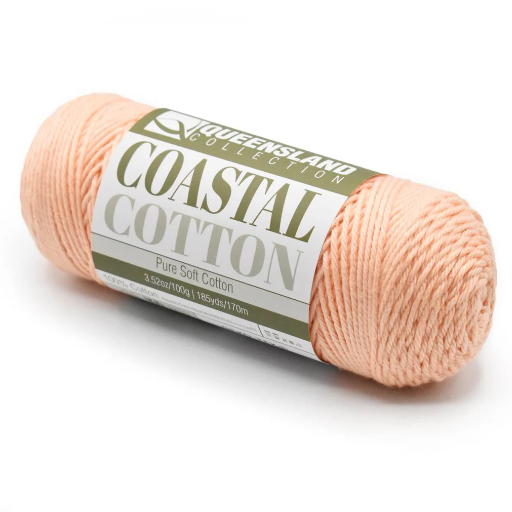
The choice between acrylic and cotton yarn ultimately depends on your specific project requirements:
Choose Acrylic When:
- Budget is a primary concern
- You need durability and easy care
- Making items for frequent use
- Working on warm weather accessories
- Creating children’s items that need frequent washing
Choose Cotton When:
- Environmental impact is important to you
- You prefer natural fibers
- Making summer garments or accessories
- Creating items that need moisture absorption
- Working with sensitive skin in mind
Reference Sources
1. Warping Parameters Influence on Warp Yarns Properties
- Key Findings:
- The study analyzed the tensile strength and elongation of cotton, spun polyester, and polyacrylic yarns under different warping conditions.
- Polyacrylic yarns exhibited the highest elongation percentage due to their inherent elasticity and air content.
2. Recycling of Textiles in India
- Key Findings:
- Cotton and acrylic yarns are extensively recycled in India for various applications, including industrial wipers, rugs, and blankets.
- Recycled cotton yarns are used in paper manufacturing, bedding, and nonwoven industries.
3. Current Situation of Environment Protection Sizing Agent and Paste
- Key Findings:
- Acrylic-based sizing agents are being developed as eco-friendly alternatives to PVA (polyvinyl alcohol) in textile processing.
- Acrylic sizing agents offer excellent adhesion to synthetic fibers and improved moisture absorption.
Frequently Asked Questions
Q: What are the main differences between cotton and acrylic yarn?
Cotton yarn is a natural fiber made from cotton plant fibers, while acrylic yarn is synthetic and made from man-made materials. Cotton is softer, more breathable, and ideal for warm weather, while acrylic is more durable, lightweight, and suitable for everyday items like blankets and toys.
Q: How do I choose the right yarn for my crochet project?
Consider factors like texture, durability, and intended use. For breathable items, choose cotton or cotton blends. For easy-care, durable items, acrylic is preferred. Think about yarn weight too – lighter acrylic works well for garments, while heavier cotton is great for dishcloths or home décor.
Q: Is acrylic yarn better than cotton yarn for certain projects?
Yes, acrylic excels for projects requiring elasticity and durability, such as toys or blankets, due to its synthetic properties. Cotton is better for summer garments or dishcloths due to its absorbency and softness. For frequently washed items, acrylic is typically easier to maintain.
Q: What are the benefits of using cotton yarn in crochet?
Cotton yarn offers excellent breathability for warm weather garments, has a lovely drape, and is highly absorbent – perfect for dishcloths and kitchen items. It’s also great for delicate projects like lacework and provides a natural, comfortable feel against the skin.
Q: Can I use acrylic yarn for cotton projects?
While possible, consider the specific characteristics needed. Acrylic is lightweight and easy to work with, but if you need cotton’s breathability and absorbent qualities, acrylic may not perform as well. An acrylic blend might offer a good compromise, providing benefits of both fibers.









